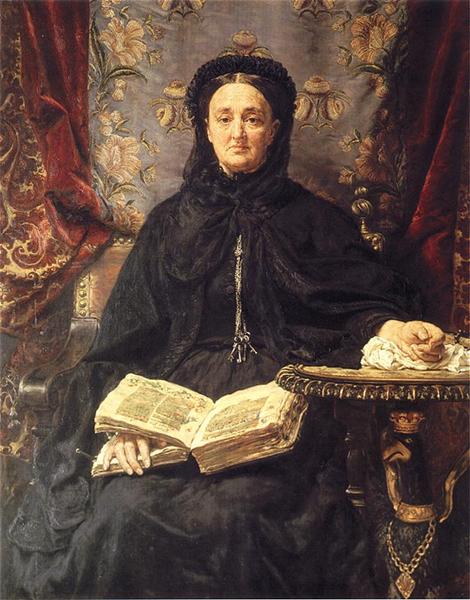Description
The work "Catherine Potocká" by Jan Matejko is another example of the mastery of the Polish painter, known for his ability to merge the history and national identity in a shocking visual format. Matejko, who lived between 1838 and 1893, is famous for his great historical compositions, where he portrays significant moments of Polish history, as well as for his portraits that capture both individual and cultural essence. In this case, the representation of Catherine Potocká, a figure of the Polish nobility, becomes a focal point to explore the wealth of the portrait and female representation in the art of the nineteenth century.
The composition of this painting is remarkable for its balance and the use of space. Catherine Potocká appears in the foreground, dominating the scene, allowing the viewer to concentrate on her features and the elegance of her figure. The woman's position is upright and dignified, which can be interpreted as a reflection of their social status and the strength of character expected of the figures of their category. His clothing, elaborate and detailed, is another aspect worthy of attention; The use of black color and golden touches in your suit suggest both mourning and wealth, a duality that invites reflection on your life and your role in society.
The atmosphere in which Catherine is located is equally significant. The background, which presents a soft blur, suggests an atmosphere of intimacy, allowing the central figure to shine with a luminosity that captures the light masterfully. The color palette is predominantly dark, but the use of subtle highlights on the face and hands of Potocká highlights its beauty and humanity. This is a characteristic feature of Matejko, who often used color to tell stories and highlight emotions at work.
As for his technique, Matejko demonstrates his ability to portray textures, both in the skin and in the tissues of clothing. This meticulous detail attention not only serves to beautify the work, but also positions that portrayed in a very specific cultural and temporal context. When observing the painting, the viewer can feel the connection between art and history, between the figure of the portrait and its family and national legacy.
Catherine Potocká not only represents a person, but can also be seen as a symbol of the Polish nobility of the nineteenth century, contributing to the narrative of a period of transition and political agitation in Poland. In turn, the portrait reflects a tendency of art of that time where the representation of the individual, psychology and social circumstances began to explore more intensely.
When considering similar works by Matejko, such as "Skingrzymi" or "Sta? Czyk", you can appreciate your commitment to Polish history and identity, as well as its ability to use the portrait as a means of exploration. "Catherine Potocká" is erected as another testimony of his talent in the capture of human essence, complemented by a style that mixes both the rich tradition of European baroque portrait and the incipient modernity that sought to recognize the individual in his complexity.
Matejko's work, including his works less known as "Catherine Potocká", continues to resonate in the contemporary discussion about identity, representation and history of art, serving as a bridge between the past and a future in constant development. This portrait invites a contemplation not only of the figure of Catherine Potocká, but also of the artistic wealth that Poland has contributed to the cultural world.
KUADROS ©, a famous paint on your wall.
Hand-made oil painting reproductions, with the quality of professional artists and the distinctive seal of KUADROS ©.
Art reproduction service with satisfaction guarantee. If you are not completely satisfied with the replica of your painting, we refund your money 100%.

